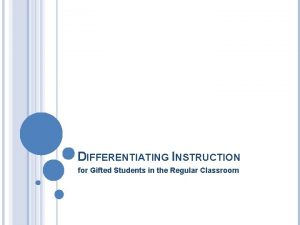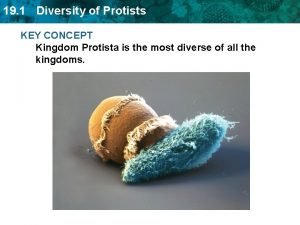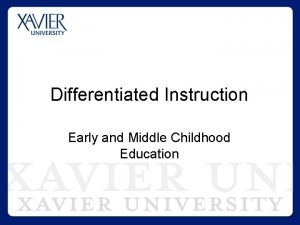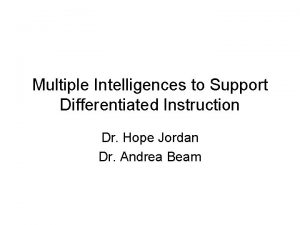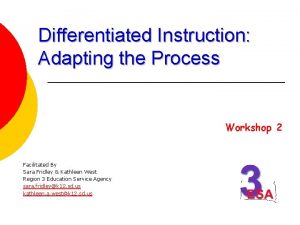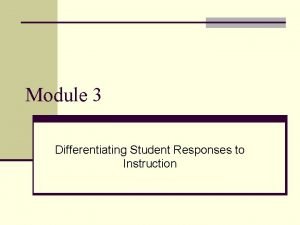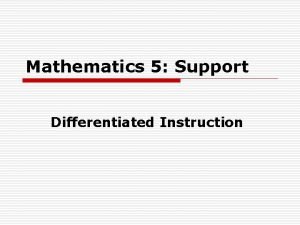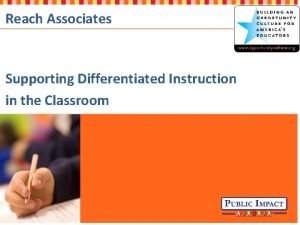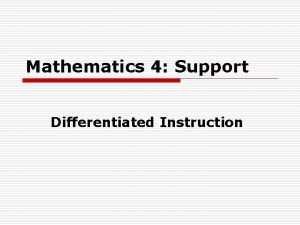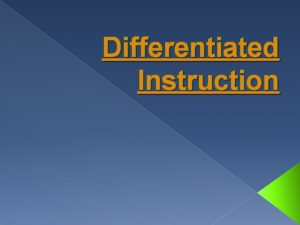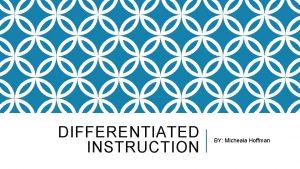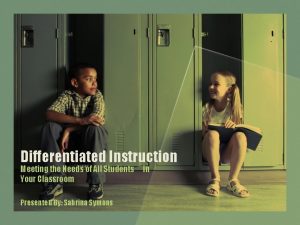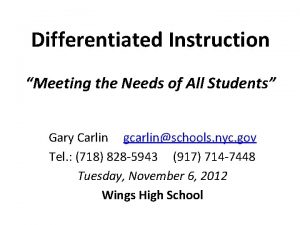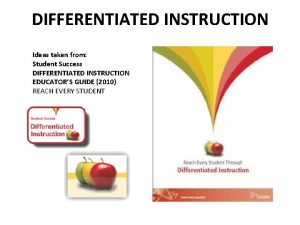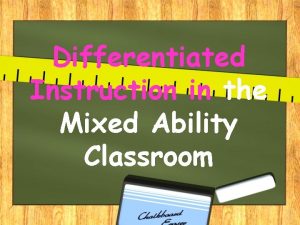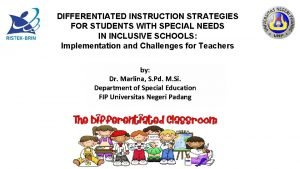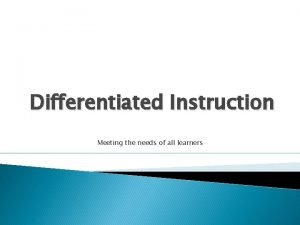DIFFERENTIATED INSTRUCTION Meeting the diverse needs of students









- Slides: 9

DIFFERENTIATED INSTRUCTION Meeting the diverse needs of students through a variety of instructional techniques

Differentiated instruction • Begins when teachers recognize that variations are needed to engage and challenge all learners in a particular lesson. • LRE = least restrictive environment for students with special needs. • Reality = You will almost certainly have a wide range of ability, cultural backgrounds, interests, etc. in your classroom

Use a Variety of Strategies • Differentiated instruction is doing whatever it takes to help students learn by providing individual accommodations and making adjustments to lesson plans • “High-quality differentiation is really just good teaching!” – Carol Ann Tomlinson • It is based on a responsive mind-set

Benefits students at all levels • Differentiated instruction helps students learn for themselves how they learn best. • They learn to “self-differentiate” in the world! • Helps them choose their own career goals

Use self-reflection to design, implement, and assess your lessons • You may decide to use a variety of teaching methods, such as: • Tiered assignments • Flexible grouping • Re-teaching activities • Independent studies v. All meet the same curriculum goal v. Change the nature of the work, not its quantity!

Primary sources offer excellent opportunities for differentiation • Differentiate through content – have students examine different primary sources to reach conclusions • Differentiate through process – all students use the same primary source but perform different learning processes • Differentiate through responses (product) – students get to choose their method of response

Sample lesson • Slavery In the Antebellum South: Varying the Learning Process with Primary Sources


Differentiation, cont. • Assessment – should inform our practice at every turn • For ex. , differentiate formatively with exit cards; you can provide different prompts to meet students at their level of learning • Learning environment matters • How can classrooms be arranged as “student centered” rather than “teacher centered”?
 Differentiated instruction vs individualized instruction
Differentiated instruction vs individualized instruction Gifted choice boards
Gifted choice boards Diversity of protists
Diversity of protists Early childhood development with differentiated instruction
Early childhood development with differentiated instruction Multiple intelligences and differentiated instruction
Multiple intelligences and differentiated instruction Think dots differentiated instruction
Think dots differentiated instruction Jigsaw differentiated instruction
Jigsaw differentiated instruction Open ended questions examples
Open ended questions examples Jigsaw differentiated instruction
Jigsaw differentiated instruction Entry points differentiated instruction
Entry points differentiated instruction

